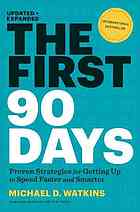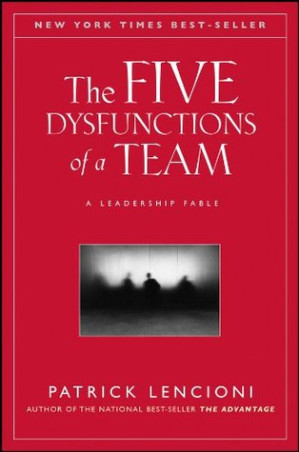Definition - Redefining Success and Goals
The New Rich are those who abandon the deferred-life plan and create luxury lifestyles in the present using the currency of the new rich: time and mobility.

Book summary
by Timothy Ferriss
Escape 9-5, Live Anywhere, and Join the New Rich
Summary of escaping 9-5, living anywhere, joining the new rich
Topics
Read The 4-Hour Workweek with a notebook and treat each DEAL framework component as an actionable project. After each section, immediately apply one principle to your current work situation. Use Readever's highlighting to capture specific outsourcing strategies, muse business ideas, and elimination techniques. Set reminders to review your progress weekly and track time savings from implemented strategies.
Things to know before reading
A revolutionary guide to escaping the traditional 9-5 grind by creating automated income streams, outsourcing tasks, and designing your ideal lifestyle through the DEAL framework.
The DEAL Framework: A Systematic Approach to Freedom
The New Rich are those who abandon the deferred-life plan and create luxury lifestyles in the present using the currency of the new rich: time and mobility.
Being busy is a form of laziness - lazy thinking and indiscriminate action.
The goal is to make money work for you instead of you working for money.
The opposite of love is indifference, and the opposite of happiness is boredom.
Ready to continue? Launch the Readever reader and keep turning pages without paying a cent.
The 4-Hour Workweek challenges conventional career wisdom and provides a step-by-step blueprint for achieving financial freedom, location independence, and time abundance through smart automation and lifestyle design.
Key idea 1
The New Rich are those who abandon the deferred-life plan and create luxury lifestyles in the present using the currency of the new rich: time and mobility.
Ferriss introduces the concept of the "New Rich" - people who reject the traditional retirement model and instead design their lives to maximize freedom and experiences now, not later. This involves setting clear, specific goals for what you want to achieve with your newfound freedom.
Remember
Key idea 2
Being busy is a form of laziness - lazy thinking and indiscriminate action.
This principle focuses on ruthlessly eliminating time-wasting activities through the 80/20 principle (Pareto Principle) and Parkinson's Law. Identify the 20% of activities that produce 80% of your results and eliminate or minimize everything else.
Remember
Key idea 3
The goal is to make money work for you instead of you working for money.
Ferriss teaches how to create automated income streams through muse businesses - low-maintenance ventures that generate income with minimal time investment. This involves product creation, outsourcing, and systematic processes.
Remember
Key idea 4
The opposite of love is indifference, and the opposite of happiness is boredom.
This final step focuses on creating complete location independence and time freedom. Ferriss provides strategies for negotiating remote work arrangements, taking mini-retirements, and designing a lifestyle that prioritizes experiences over possessions.
Remember
The 4-Hour Workweek is a comprehensive guide to escaping the traditional 9-5 work model and designing a life of freedom, adventure, and purpose. Timothy Ferriss challenges conventional career wisdom and provides practical, step-by-step strategies for creating automated income streams, outsourcing tasks to virtual assistants, and achieving location independence.
The book is structured around the DEAL framework (Definition, Elimination, Automation, Liberation) and draws from Ferriss's personal experience of going from working 80 hours per week and earning $40,000 annually to working 4 hours per week and earning $40,000 per month. It combines productivity principles, entrepreneurship strategies, and lifestyle design concepts to help readers create their ideal life.
Open Readever's reader to highlight passages, ask the AI companion questions, and keep exploring without paying a cent.
The 4-Hour Workweek has become a modern classic in the personal development and entrepreneurship space, praised for its bold vision and practical advice. While some critics argue the "4-hour" claim is unrealistic for most people, the book's core principles about efficiency, automation, and lifestyle design have proven valuable for millions of readers worldwide.
Ferriss's writing style is direct, provocative, and filled with actionable advice. The book successfully challenges readers to question their assumptions about work, success, and life purpose. Its greatest strength lies in providing concrete systems and frameworks that readers can implement immediately.
Entrepreneurs and business owners looking to automate their operations
Corporate employees feeling trapped in the 9-5 grind
Freelancers and remote workers wanting to maximize efficiency
Anyone interested in lifestyle design and location independence
People seeking practical strategies for achieving financial freedom
Timothy Ferriss is an American entrepreneur, investor, author, and podcaster. He is best known for his "4-Hour" book series, which includes The 4-Hour Workweek, The 4-Hour Body, and The 4-Hour Chef. Ferriss graduated from Princeton University and has been featured in numerous media outlets including The New York Times, The Economist, and TIME.
Before becoming an author, Ferriss was the CEO of BrainQUICKEN, a nutritional supplement company. He is also an early-stage technology investor/advisor (Uber, Facebook, Shopify, Duolingo, Alibaba) and host of The Tim Ferriss Show, one of the most popular business podcasts with over 900 million downloads.
Build your personalized reading stack
DEAL Framework: Definition, Elimination, Automation, Liberation
80/20 Principle applied to work and life
Virtual assistant outsourcing strategies
Muse business creation and automation
Mini-retirements and location independence
Sign in to Readever to keep reading with AI guidance, instant summaries, and synced notes.
The 4-Hour Workweek offers a radical yet practical approach to redesigning your life around freedom rather than traditional career success. While the literal "4-hour workweek" may not be achievable for everyone, the principles of efficiency, automation, and lifestyle design are universally applicable. The book's greatest contribution is shifting the focus from working harder to working smarter, and from accumulating wealth to creating meaningful experiences.
Ferriss's DEAL framework provides a systematic approach that anyone can adapt to their circumstances. Whether you implement one principle or the entire system, this book will challenge your assumptions about work and life while providing actionable strategies for creating more freedom, adventure, and purpose.
The Definition phase is about fundamentally rethinking what success means to you. Ferriss introduces several powerful concepts:
The New Rich Mindset:
Fear-Setting Exercise: A powerful technique to overcome analysis paralysis by systematically analyzing:
The 80/20 Principle in Action:
Parkinson's Law Application:
Selective Ignorance:
Muse Business Creation:
Virtual Assistant Strategies:
Product Creation Framework:
Remote Work Negotiation:
Mini-Retirements:
Geographic Arbitrage:
This extended analysis provides the depth needed to fully understand and implement The 4-Hour Workweek principles while acknowledging both the opportunities and challenges of this lifestyle design approach.

Michael D. Watkins
Proven strategies for getting up to speed faster

Howard Zinn
Tells American history from the perspective of ordinary people

Patrick Lencioni
Leadership fable about overcoming team dysfunction patterns
Start reading The 4-Hour Workweek for free and unlock personalized book journeys with Readever.